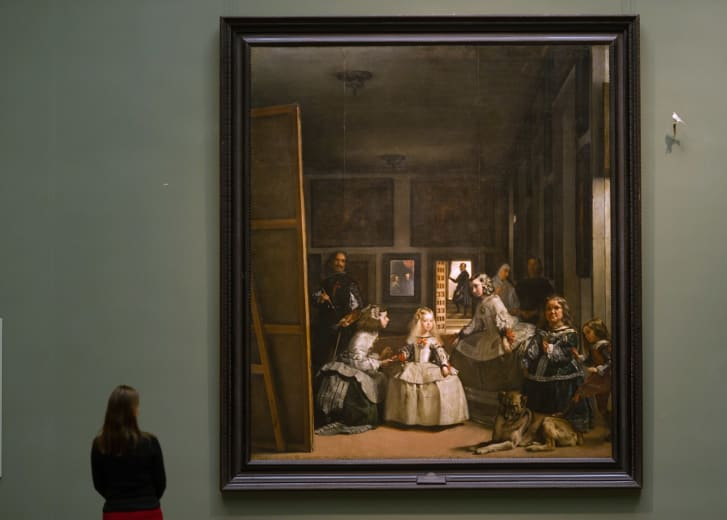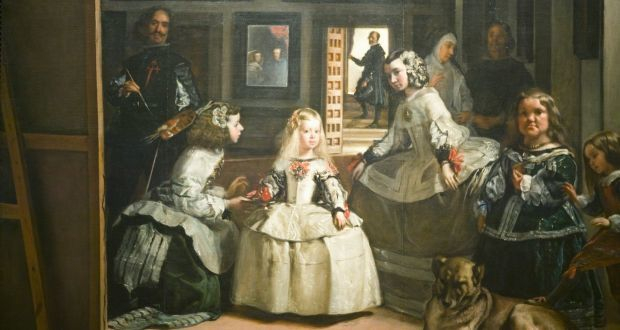Las Meninas
There aren't many pieces of art whose initial purpose is still a mystery. Diego Velazquez painted Las Meninas (The Ladies-in-waiting) in 1656 and it shows a scene from the Spanish court, while Velazquez served as royal chamberlain. Art historians have been rather perplexed by the scene because it features a strange array of individuals, including Velazquez, a nun, a dwarf, and a princess. It was a departure from more traditional royal portraiture, which often only includes the royal family and is organized in a very structured and hierarchical way.
Madrid is the only city in this list where two of the top ten paintings can be found, with "Las Meninas" at No. 9 and "Guernica" at No. 5 respectively. Diego Velázquez's "Las Meninas," one of his largest paintings, is housed at the well-known and sizable Prado. It is also one of his most well-known works. Art critics and the general public have been captivated by the work's complexity for centuries. The artwork serves as both a portrait and a landscape. In addition to being a group picture of the Spanish royal family, it is a self-portrait of Velázquez working (on the left).
From 1621 through 1665, Spain's King Philip IV ordered the production of "Las Meninas." Prior to moving to the Prado in 1819, it was kept in the royal palace.
Artist: Diego Velázquez
Date: 1656
Where to see it: Museo del Prado (Madrid)












